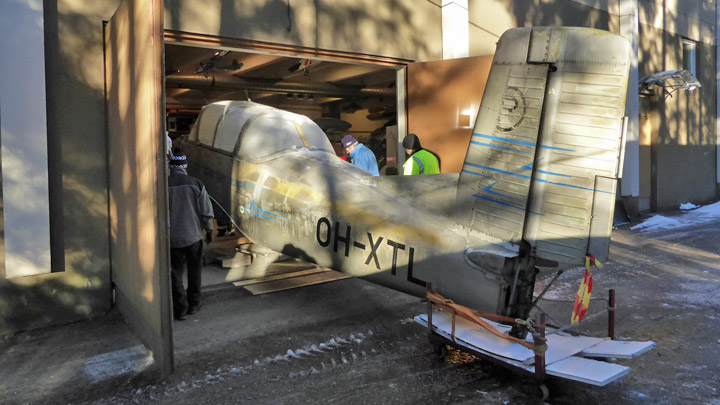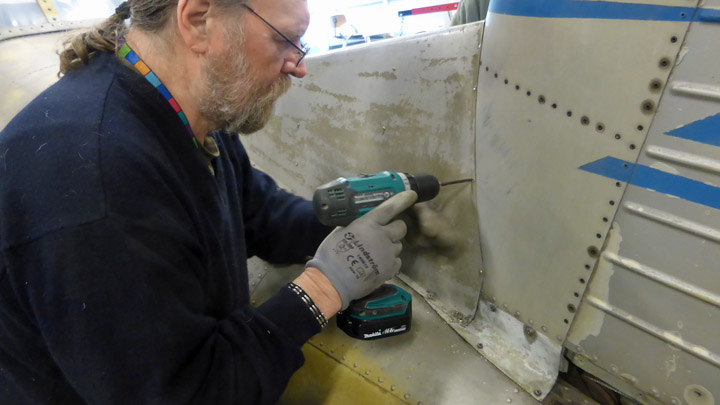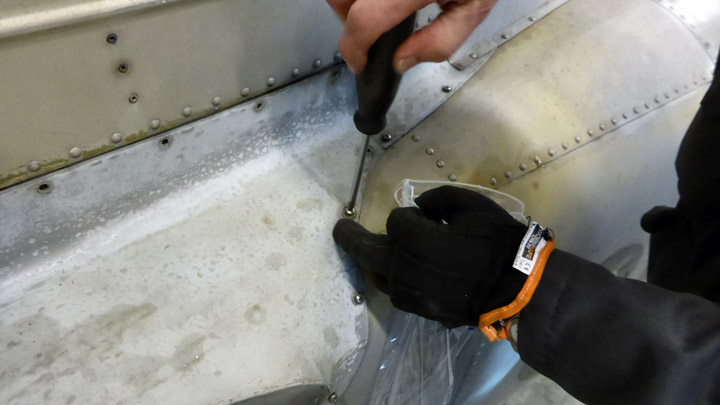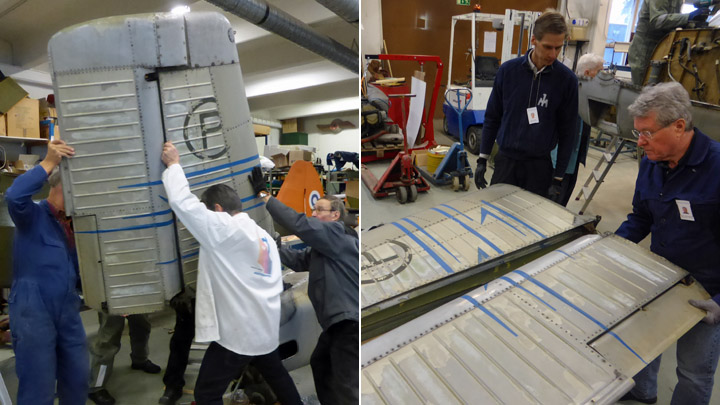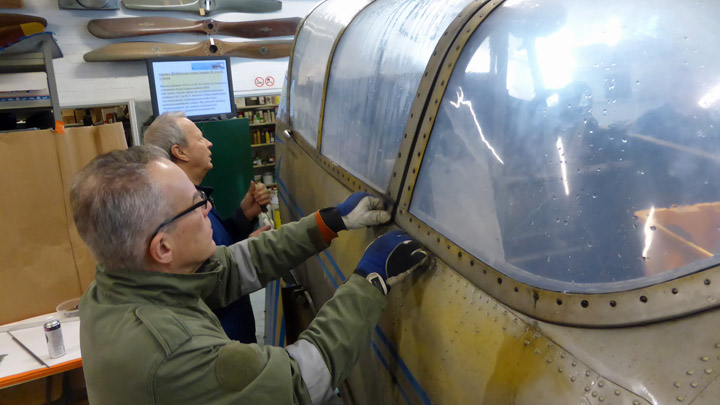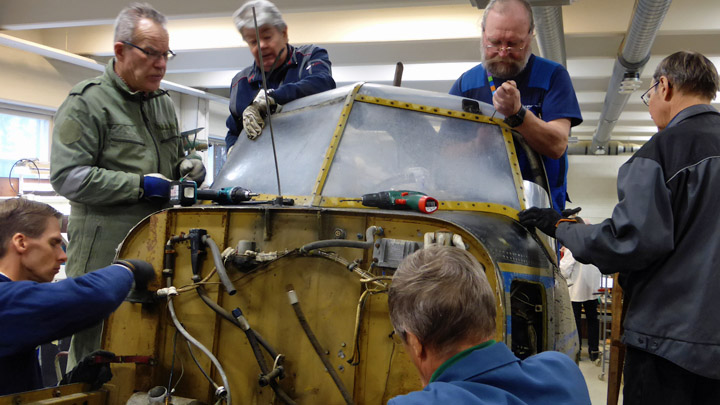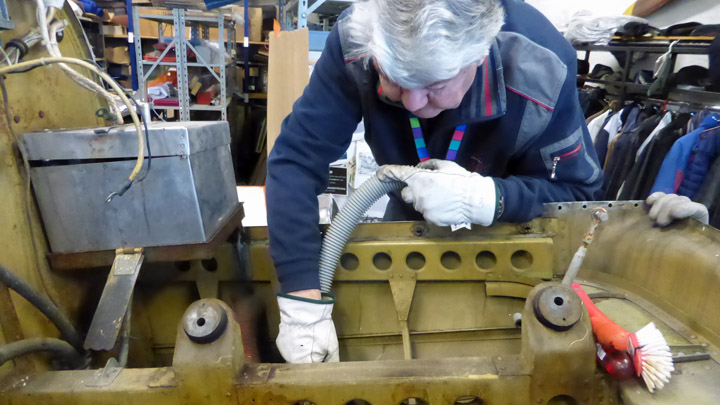Preparatory work on the Tuuli III fuselage nearing completionPerjantai 26.2.2016 - Member of Tuesday Club After the wings and tail-parts of the Tuuli III had been taken from the Finnish Aviation Museum to the Tavastia Vocational College for repainting, the Tuuli III fuselage could be moved from the Finnish Aviation Museum’s yard into the restoration workshop for pre-painting preparation work. This includes removing all easily removable parts to facilitate the painting of the fuselage. When the preparatory work is done, the fuselage will then be ready for transportation to Hämeenlinna.
On Tuesday 16 February, the Tuesday Club begun the preparatory work on the fuselage. The first job was to remove extension of the fin, attached to the leading-edge of the fin and to the fuselage. This part is not an original part of the Tuuli III prototype, but a later addition, installed to improve the flight characteristics by improving rudder-authority and spin-characteristics. After its removal the actual fin and the rudder were removed.
The fin-extension was riveted to the fin and fuselage, so removing it meant drilling out the rivets. But I didn’t come off yet. It was further riveted to three aluminium brackets situated inside the fin-extension, so some more drilling had to be done before it could be removed. And when it was off, some more drilling and the brackets were off.
Now the aluminium cover-plates at the root of the fin were removed. They were attached using cross-head screws, so they came off in a jiffy. The fin itself was bolted to three bracket attached to the fuselage, two under the trailing- and one under the leading-edge of the fin. When the bolts had been removed, the fin with the attached rudder could be easily lifted off and placed on a stand. Next, the fin rudder was separated from the fin.
Then the cockpit hood was removed, starting with the foldable side-panels (folding upwards) and then continuing with the fixed rear part. The foldable parts came off by turning the emergency release handles – this opened the cotter-pins securing the hinge-pins of the canopy-side panels top hinges and the panels could be removed. To remove the fixed rear part of the canopy the cotter-pins securing the lock-pins had to be pulled out separately.
The 5 mm thick plexiglass windscreens were badly cracked, so they had to be removed and have to be replaced. Removing them was arduous, because they were fastened to the windscreen tube-frame using machines screws and nuts – through the tubing and now badly corroded. Some of the screws could be removed after soaking with rust penetrant, some hade to be drilled out. The removed plexiglass sheets will be kept as patterns for the new ones to be installed. All the windscreen panels are flat, so replacing them will now be a piece of cake. Replacing any of the convex hood plexiglass panels, if needed, will be quite a matter.
The engine cowling was removed. The Continental engine had already been removed by the Wednesday-Club last year. With the engine-bay open the battery and the battery-rack, fuel-filter, fuel- and oil-hoses and some other parts were removed.
Removing equipment fastened to the fire-wall was tricky, because the fastening bolts were fastened through the fire-wall and the nuts were located under the insulation material in the cockpit. In addition to this, working on the cockpit side of the firewall was tricky, because the instrument panel support-structures made working-space issues challenging. 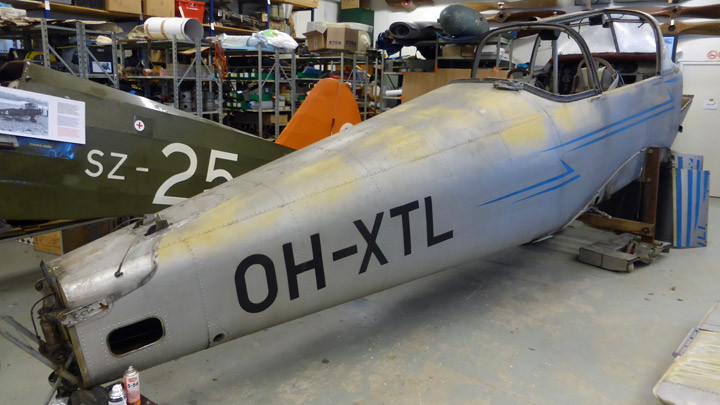 The dismantlet fuselage of Valmet Tuuli III. |
|
Avainsanat: aviation history, restoring, old aircraft, Valmet Tuuli III, OH-XTL, TL-1 |


